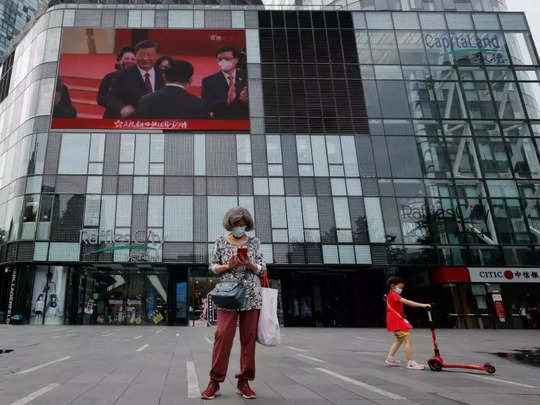China Economy: China’s treasury has become empty while giving loans to other countries? Tanks outside banks, angry public… A sound of big economic crisis!


China, which has trapped many countries of the world in the debt trap, is now getting itself into trouble. Its economy (China Economy) is getting into trouble due to stagnation of growth, rising unemployment rate, mortgage crisis and Covid lockdown. It is believed that due to the economic crisis in this country too, serious social and political consequences can be seen.
These days there has been an outcry in Sri Lanka. The currency reserves of the country are empty and the people are protesting on the streets. According to experts, all this happened because of China. The government took a billion-dollar loan from China and now the country is going through the biggest economic crisis. But is ‘all is well’ in China, then, it is not so. The biggest foreign crisis has arisen in front of this biggest economic superpower of the world. The reason for this is that the favorite project of President Xi Jinping, due to which many small countries were given a lot of debt. The Belt and Road Initiative (BRI) has now pushed China towards a very big problem.
Jinping’s favorite project
BRI was launched by Jinping as his biggest foreign policy. This was China’s biggest plan since 1949. Also, it was the world’s largest infrastructure program which was started by any country. Many projects were launched under this plan, but the benefits that China had to get from it could not be found. Whereas China gave loans to many countries for its infrastructure projects. Because of this, as much pressure was placed on China, as much pressure on those countries like Sri Lanka which were already in economic crisis. In a report by the Financial Times, China’s BRE project was termed as a high level of economic risk.
Biggest Debt Crisis
In many countries of Asia, Africa and Latin America, due to this project, debt crisis has arisen one after the other. This program was first proposed in the year 2013. According to the think-tank American Enterprises Institute, by the end of 2021, due to these projects, $ 838 billion had been paid to many developing countries. He himself does not know when China will get this loan back. At the same time, according to Rhodium, a New York-based research group, Chinese banks gave a curl of $ 52 billion in the years 2020 and 2021. This was 16% more than in the first two years.
Savings freezed in banks
On the other hand, if we talk about inside the country, then many home owners here have refused to pay the mortgage. Due to this a new crisis has arisen in front of the banks. On Wednesday, there was a long line of tanks in front of a bank in Henan province and the reason was a decision of the Bank of China. On behalf of the Henan branch of Bank of China, the depositors have been told that they have also deposited the amount here, now it is an investment and it cannot be withdrawn. There are large-scale protests against this bank and a large number of protesters are gathered outside the bank.
The bank has frozen all the funds which are there and the depositors are now demanding their release. The reason for freezing the savings is simply the decision not to pay the mortgage. China’s property market is currently at $300 billion in debt. When Evergrande exploded last year, the biggest problem of the country’s real estate sector came to the fore.
A video of Professor Zheng Yuhuang,
of Xinghua University is going viral at the moment. In this video he is saying that the year 2022 is going to be the most difficult time for China. The country’s 460,000 companies have closed in the first half of the year. Also 3.1 million industrial and commercial industries were written off. Enterprise liquidation grew 23 percent annually, 10.76 million college graduates have taken admission and 8 million youth of the country are unemployed.
DISCLAIMER: The author is solely responsible for the views expressed in this article. The author carries the responsibility for citing and/or licensing of images utilized within the text.
